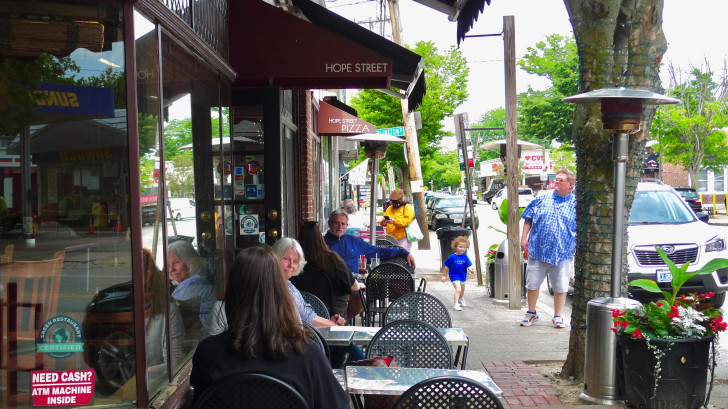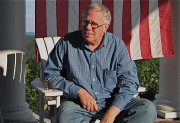Can Architecture Save Providence?–Architecture Critic Morgan
Saturday, August 28, 2021
Can inspiring architecture save a city? Can humanitarian design curb crime? Can a heightened sense of architectural issues spare us from repeating costly planning mistakes? Can consulting architectural professionals save us from monumental follies like the Fane Tower? Can architecture make Providence more prosperous, more desirable?
Fane Tower has a nominal architect, but it is essentially city-destroying real estate. Who really thought this was a good idea?
The answers to such questions no doubt are unquantifiable. But architecture definitely can contribute to making city more livable. There's a lot of bragging about the Creative Capital's design smarts, especially because the Rhode Island School of Design is located here. In fact, the people who actually plan the city only give lip service to the design professions. In order for Providence to really prosper, it needs to up its architectural game.
A thuggish and unwelcoming parking garage in the Innovation District. Who would give planning permission for such a soul-sucking structure? PHOTO: Will Morgan
It is an architect who unites a fractious, bloodthirsty murder trial jury in Sidney Lumet's 1957 film, Twelve Angry Men. Juror Number 8, played by Henry Fonda, has the ability to make his peers listen to reason, and to constructively harness a dozen divergent viewpoints and educational backgrounds.
At one point during the tense deliberations, the architect asks: "It is also possible for a lawyer to be just plain stupid, isn't it?" Fonda's character has a point. Why do we blithely entrust the design of our towns and cities to lawyers, businessmen, and politicians–people whose education rarely includes exposure to the broad challenges that architects are trained to understand. Why do we continue to believe that someone with a marketing degree knows all the constituent elements for shaping a city? Would you ask an MBA to perform brain surgery? (Or make a brain surgeon Secretary of Housing and Urban Development?) Why ask a lawyer to wrestle with materials, proportions, scale, and quality of life issues? And why allow a developer whose primary goal is squeezing maximum profits from minimal quality to dictate the health and welfare of a neighborhood?
Relying on architects is one part of the cooperative venture of creating and safeguarding our physical environment. Visually attuned, designers are concerned with how things look and, ultimately, the nature of beauty. This is not as superficial as sounds. The amount of open space or parkland, the layout of streets, the appearance of our signage–any of these can make our lives easier, make the city work more efficiently. And despite what some unions imply, a well-designed project can create as many jobs as a poorly conceived one.
Visual cues–attractive public buildings, preserved older houses, attractive pubic housing, handsome street furniture–are indicators of municipal health. Conversely, city streets ravaged by potholes reminiscent of a WWI battlefield, and where the police are discouraged from adequately patrolling, is a city that is going to have more crime than broken windows. A well-designed city serves everyone and pays long-term dividends.
As streets are the basic unit of a city, one place where our civic leaders might start is by reading the primer of sensible urban planning, Death and Life of Great American cities ("a guide how to make cities lively, vibrant, humane places to live and work") published in 1961 and still a bestseller. Author and housewife Jane Jacobs successfully halted an expressway through Greenwich Village by the previously unstoppable imperial planner, Robert Moses. One enduring theme of her polemic against visually handicapped politicians and planners is that the best anti-crime device is "eyes on the street." Simply put, streets filled with people shopping, dining, and walking, make the safest neighborhoods.
Providence already illustrates some of Jacobs' principles, in that downtown and many neighborhoods have the density and scale, the restaurants, and the outdoor gathering places, not to mention the city has been declared one of the nation's most walkable. A recent issue of Public Square, a New Urbanism journal, listed ten economic benefits and an equal number of social benefits of walkable cities. Economic advantages include boosting prosperity and supporting local businesses, enhancing creative thinking and productivity, promoting tourism, and increasing land and property values. The social benefits were broader, but no less significant: greater accessibility and inclusiveness, improving mental and physical health, boosting a sense of community, and reducing crime.
It is naive to expect our putative city leaders to become dedicated urbanists overnight. Yet, it would benefit everyone if we included more architects and designers in our decision-making. We really need to draw upon all the available brainpower in the creative capital. And, as we head into a mayoral race, it is time to insist that our candidates consider other issues beyond jobs, sweetheart contracts, and pensions.
Imagine if the Rhode Island State House had been designed by a schlock developer instead of by one of America's greatest architects. PHOTO: Will Morgan
Architecture Critic Morgan taught in the School of Urban and Public Affairs at the University of Louisville. He lectured on American town planning at the Swedish-language university in Turku, Finland.









